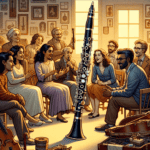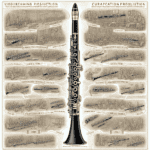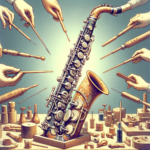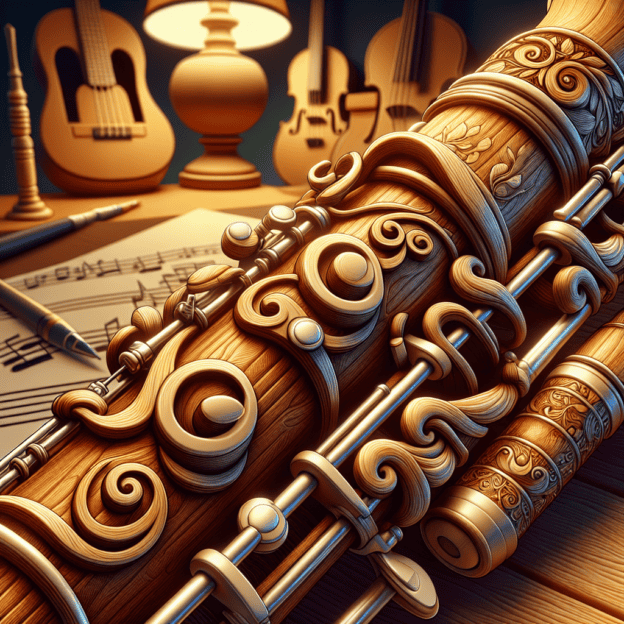Martin Freres Clarinet Serial Numbers
Every clarinetist, whether collector or performer, holds a quiet respect for instruments that carry both craftsmanship and history in their grain. Among these, few names evoke more curiosity and affection than Martin Freres. Beyond the smooth keys and aged grenadilla lies a signature of time itself: the serial number. That modest engraving, often overlooked, tells the story of where your clarinet has been and how it came to be.
What Are Serial Numbers?
A serial number is not just an identifier. It is an imprint of lineage.
From the earliest decades of the 1900s, Martin Freres of Paris, France began stamping or engraving numbers onto their clarinets to track production batches and models. These numbers were never random. They documented the shift from handmade, prewar craftsmanship to postwar industrial refinement.
For example, a clarinet marked B123xx traces to the Lamonte Model 2 of the early 1950s, a period when Martin Freres introduced stabilized grenadilla and optional silver-plated keywork on its professional lines. Earlier examples, such as the 1740 “Arrow” or Model 1, can date back to the 1930s or 1940s, representing entry-level professional designs still prized for their tone and durability. Most of these instruments use a simple four-digit stamped serial number.
Finding Your Clarinet's Serial Number
Finding the serial number often feels like unearthing a secret left by the maker. Typically, they can be found on the back of the upper joint and the lower joint. Sometimes, you may need a magnifying glass to see some of those smaller digits. You might feel like a detective on a mission, piecing together clues from the past.
| Location | Description |
|---|---|
| Upper Joint | Stamped on the back near the tenon at the bottom |
| Lower Joint | Stamped on the back near the tenon receiver at the top |
| Bell | Some models included stamped bells |
Look carefully under natural light or with a magnifier. The engraving may sit beneath lacquer, patina, or decades of polish. And remember, never scrape or sand the area. These digits are not decoration. They are the instrument’s birthmark. All serial numbers on the same instrument matched when manufactured.
Why Serial Numbers Matter
A serial number anchors your clarinet in time. For musicians, it helps you understand where in Martin Freres’ evolution your model fits. For collectors, it defines value and authenticity.
A 1930s or 1940s Martin Freres Arrow Bb clarinet in grenadilla wood may reach well above $900 to $1,100 USD in excellent condition. Later Model 2 or DeLuxe (II) clarinets from the 1950s to 1960s typically hold intermediate to professional status and still command strong resale prices when properly maintained.
Age alone does not determine worth. Era does. A wartime Paris-made model, hand-finished before automation, carries a voice that cannot be duplicated by modern tooling.
Maintenance and Serial Numbers
Different series require different care.
Earlier Martin Freres clarinets used hand-cut tenons and softer pad seats. Later versions, especially the DeLuxe series, adopted more standardized bores and nickel or silver keywork plating.
Knowing your serial range helps technicians choose compatible cork thickness, pad types, and replacement parts. A clarinet built in 1948 will not respond to the same tolerances as one from 1965. To restore tone and response faithfully, a repairer must understand what the serial number reveals about the bore, the keywork, and the maker’s era.
Uncovering Model Details
Serials also unlock identity.
Martin Freres models were often labeled under numbers and sub-names such as 1740, Arrow, Concorde, or DeLuxe. The engraving, sometimes faintly struck, tells whether your clarinet was a Paris workshop piece, an export collaboration, or a transitional model bridging two lines.
Wood choice is another clue. The company shifted from boxwood in its early decades to rosewood and grenadilla (African blackwood) in later years. Each wood responds differently to temperature and moisture, influencing the warm, centered tone that became the Martin Freres hallmark.
Historical Inspiration
To hold one is to hold a story.
Each clarinet that bears the Martin Freres name has weathered decades of music, migration, and repair benches. A clarinet stamped “A Paris” (In Paris) may have crossed the Atlantic with a musician chasing opportunity. Another, purchased from a small French conservatory, might have survived a war and still sings.
Understanding when your instrument was made does more than date it. It restores its dignity. It reminds you that tone is born from both time and touch.
Can you find one with iconic bee stamp? If you do you have likely found a valuable treasure.
Repairs and Upgrades
If you plan to repair, refurbish, or modernize your Martin Freres, the serial number is your most reliable companion. It ensures proper fit of replacement joints, correct pad seating angles, and accurate adjustment to original bore specifications.
For players upgrading mouthpieces or barrels, referencing the serial and model helps match bore compatibility, especially for the 1740 and DeLuxe series, which differ subtly in taper and projection.
Conclusion
Your Martin Freres clarinet carries more than sound. It carries signature. The serial number stamped into its wood is not a code to decipher and forget. It is a bridge between maker and musician.
Every mark, every engraving, every faint numeral represents a chapter in a long tradition of French woodwind craftsmanship. Learn it. Record it. Honor it.
Because someday, another player may hold your clarinet and look at that same number, wondering about you.







